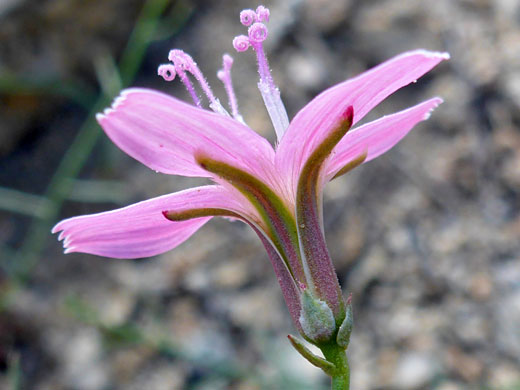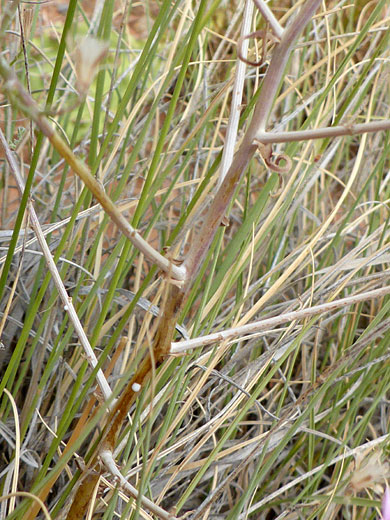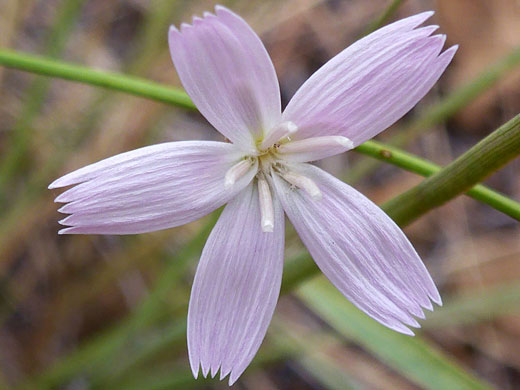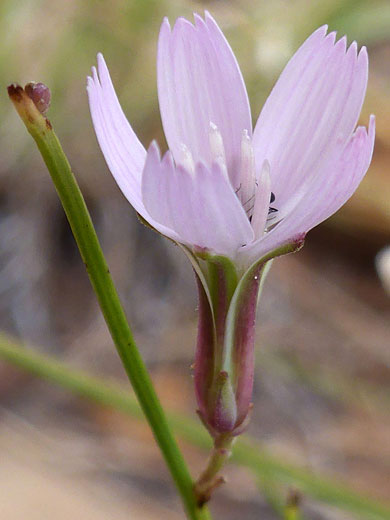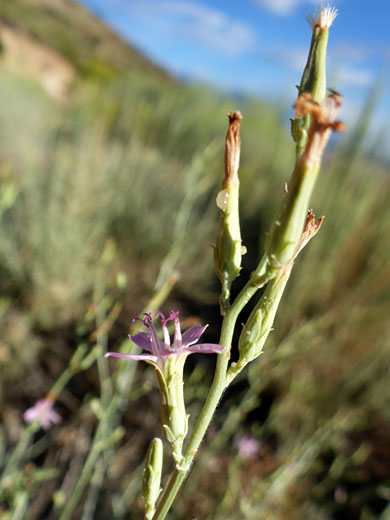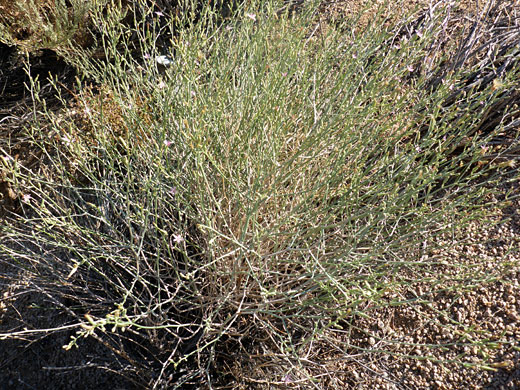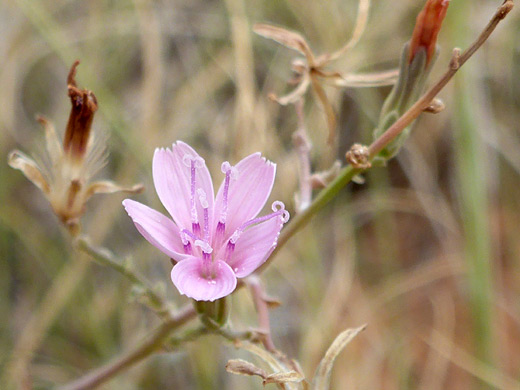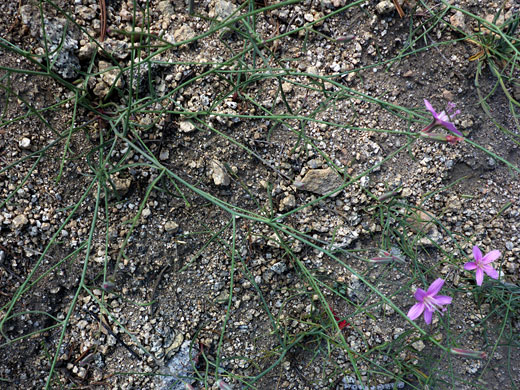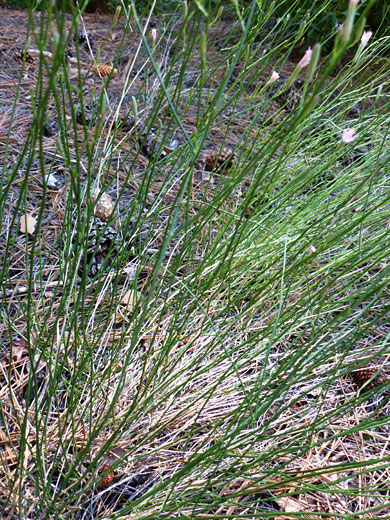Stephanomeria Tenuifolia, Narrowleaf Wire-Lettuce
Plants > Wildflowers > Asteraceae > Stephanomeria Tenuifolia
Common name:
Narrowleaf wire-lettuce
Family:
Scientific name:
Stephanomeria tenuifolia
Main flower color:
Range:
The Rocky Mountain states, all states to the west, and small parts of Texas and North Dakota
Height:
Up to 27 inches
Habitat:
Cliffs, rocky places, open hillsides; 1,000 to 9,500 feet
Leaves:
Linear, often thread-like, toothed or entire edges, up to 3 inches long
Season:
June to September
Leaves of stephanomeria tenuifolia are usually completely withered at flowering time; prior to this, the upper stem leaves are short and bract-like, while those at and near the base are narrow and linear. All leaves, and stems, are hairless. Plants produce up to five stems, which branch readily, and are green when young, brownish when older. Branches are held at a large angle, close to 90 degrees.
Flowerheads form in summer at the ends of the branches, sometimes stalkless but usually attached by a stalk of up to 2 inches, lined by small, alternate bracts. A few similarly-sized bractlets enclose the base of the involucre. Phyllaries number five or six; these are hairless, colored green or reddish, with rounded tips. Flowerheads usually have four or five toothed pink florets, less often six. The pappus bristles, visible most readily once the florets have withered, are pure white, and lined with tiny feathery hairs for their whole length. This is one aspect which differentiates stephanomeria tenuifolia from the very similar stephanomeria pauciflora, as the latter has brown bristles, with hairs only on the uppermost 80%.
Flowerheads form in summer at the ends of the branches, sometimes stalkless but usually attached by a stalk of up to 2 inches, lined by small, alternate bracts. A few similarly-sized bractlets enclose the base of the involucre. Phyllaries number five or six; these are hairless, colored green or reddish, with rounded tips. Flowerheads usually have four or five toothed pink florets, less often six. The pappus bristles, visible most readily once the florets have withered, are pure white, and lined with tiny feathery hairs for their whole length. This is one aspect which differentiates stephanomeria tenuifolia from the very similar stephanomeria pauciflora, as the latter has brown bristles, with hairs only on the uppermost 80%.
All Contents © Copyright The American Southwest | Comments and Questions | Contribute | Site Map
